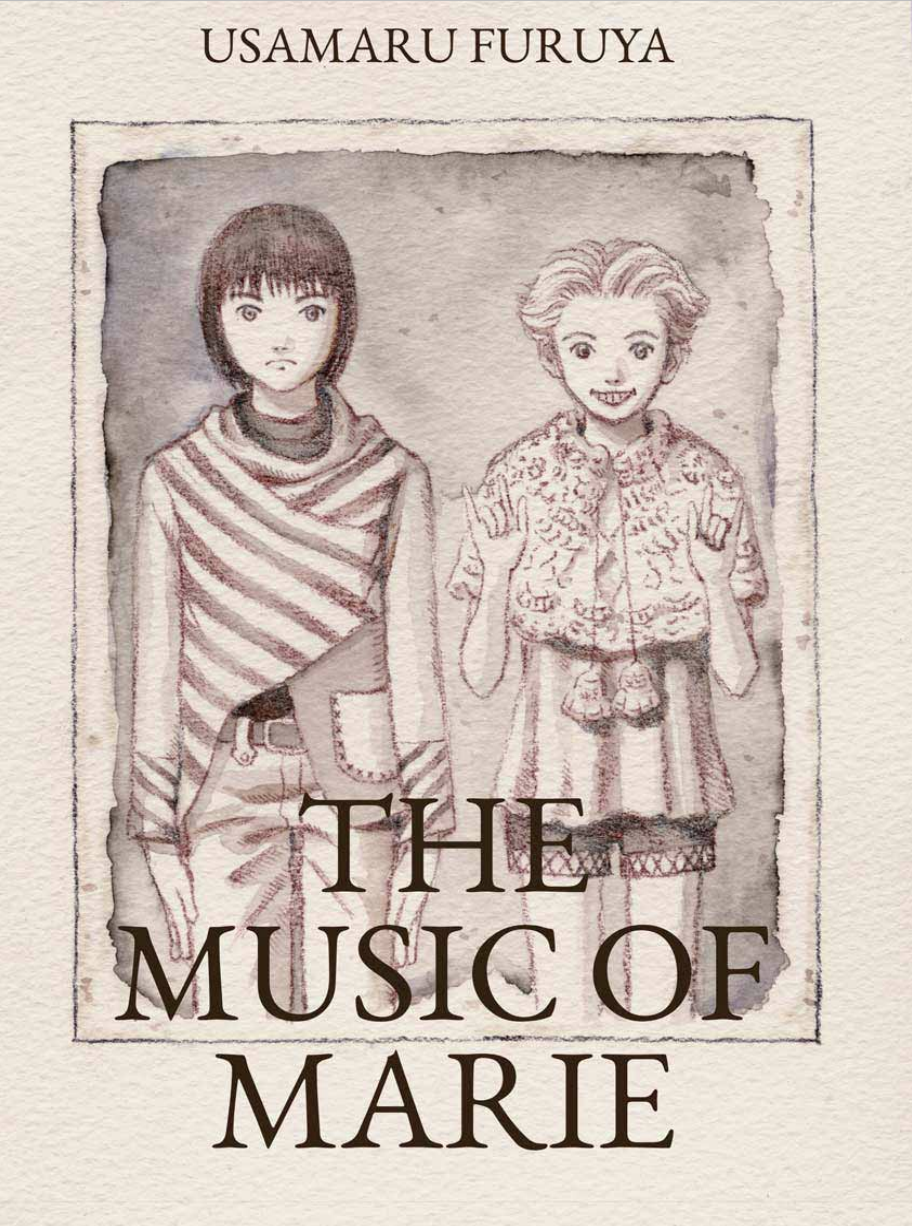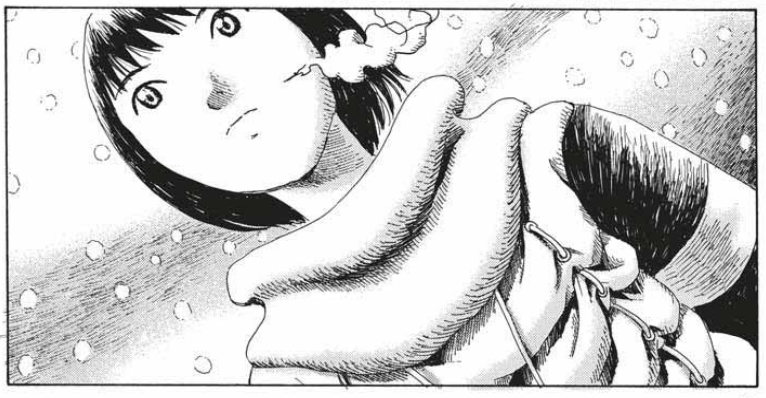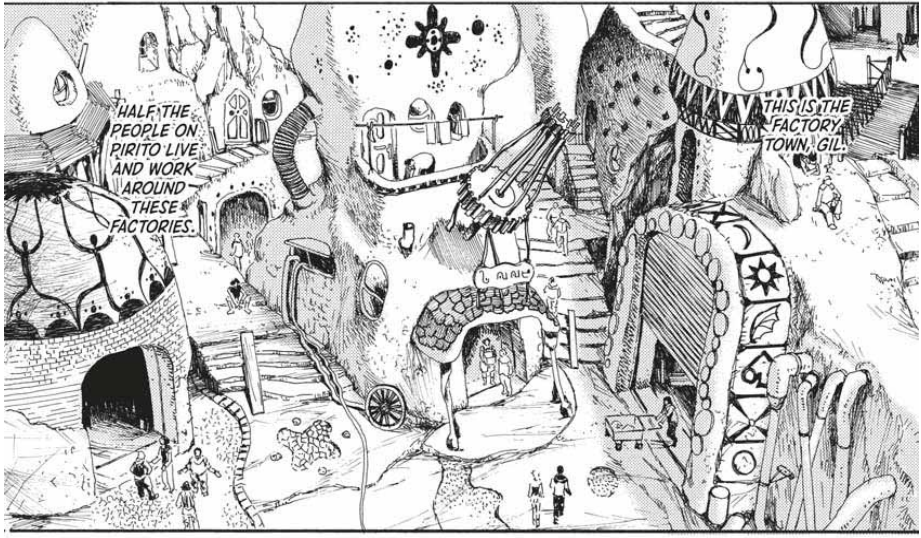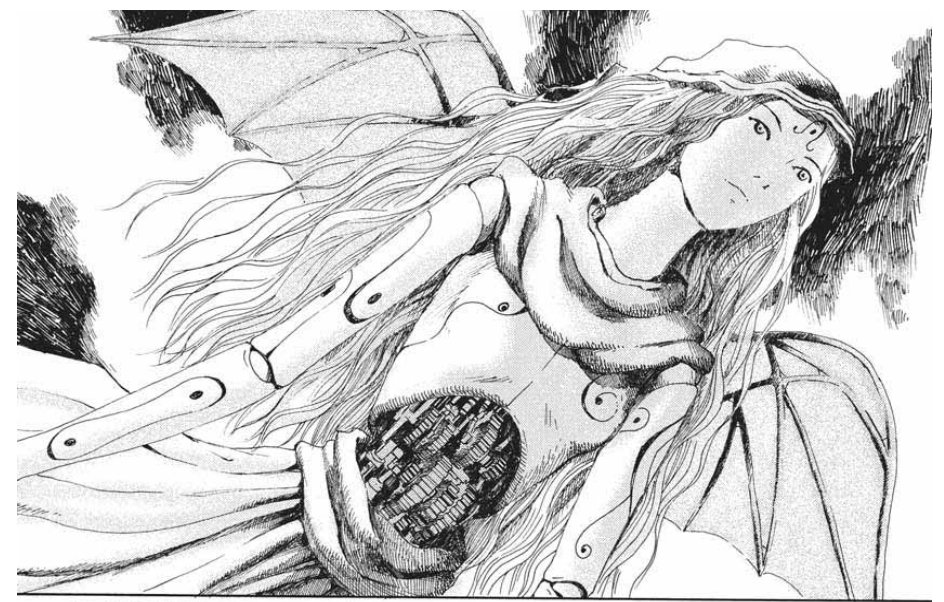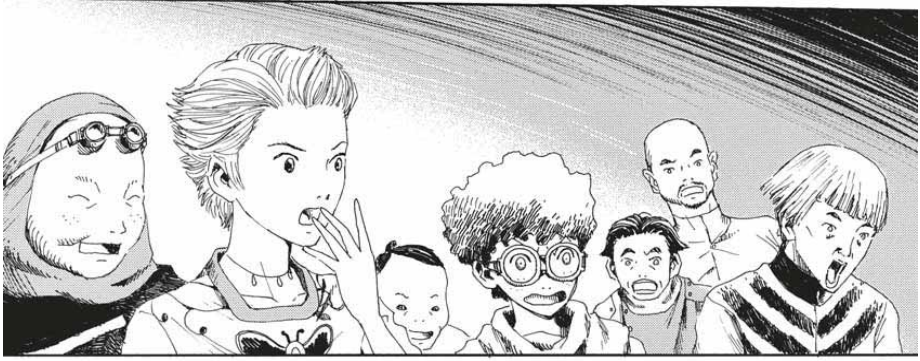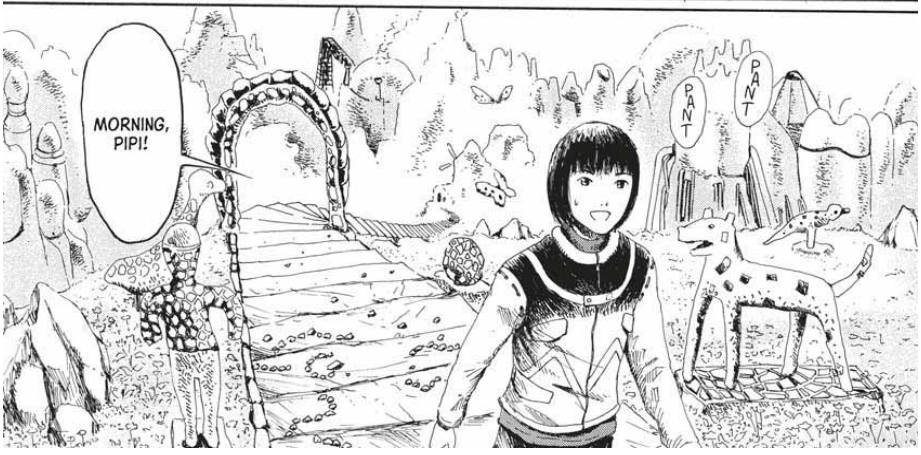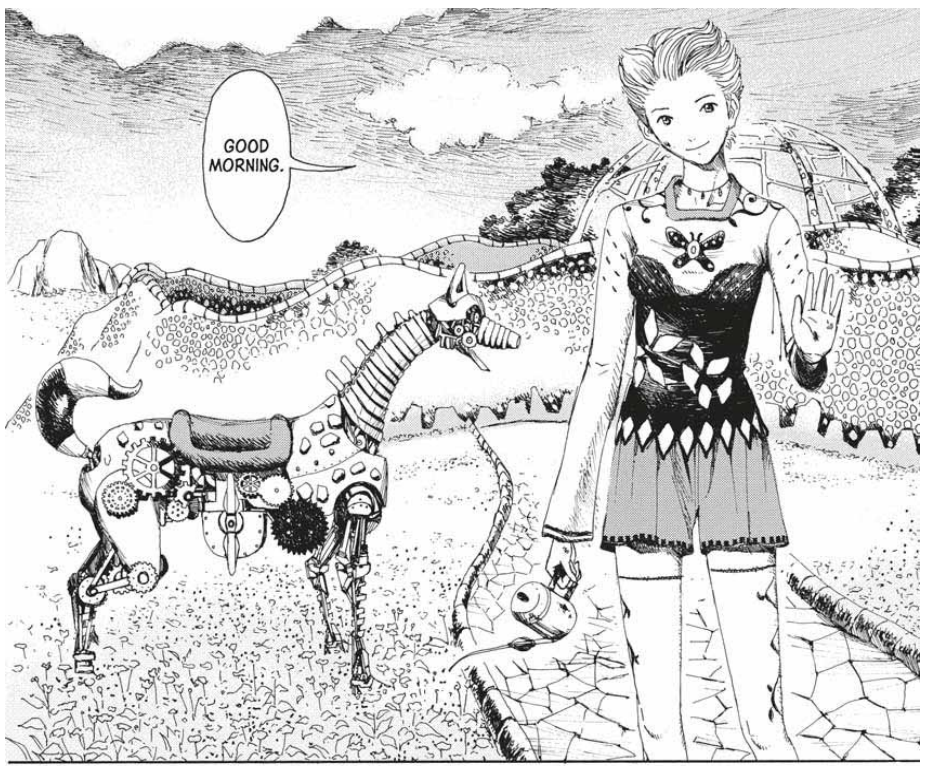The Masterpiece “Music of Marie”
Contemporary mainstream avant-garde manga creator Usamaru Furuya may be best known to American readers for his off-kilter humorous stores Genkaku Picasso and Lychee Light Club. His two-volume 1999 manga story The Music of Marie (Marie no Kanaderu Ongaku) is relatively unknown among American readers despite having been previously officially translated into French and Spanish languages. Thanks to One Peace Books, the exquisite The Music of Marie may finally reach the large English-speaking audience that it deserves. Usamaru’s profound philosophical drama is an affecting, unforgettable story addressing human nature, technology, psychology, and theology.
Especially in recent years, the concept of world building has become a buzz word among critics and consumers of fantasy literature. The term is frequently generously applied to any and every story that manages to depict a setting with any degree of creativity. Usamaru’s Music of Marie legitimately deserves the accolade, however, as it depicts an entire retro-futurist world with unique languages, social and religious beliefs, customs, and rituals. The story is set on an island nation distinguished by its clockwork industry. The country runs on intricate gears and sprockets, exporting iron-age machines to neighboring countries to support its populace. Within this setting an unusual romantic triangle develops between the young girl Pipi who loves her childhood friend Kai. But Kai is possessed by a compulsive adoration of the world’s clockwork goddess, the gigantic robotic Marie that orbits the planet and ministrates its people. Revealing more about how the plot unfolds does a grave disservice to future readers.
The story reveals itself slowly, initially devoting a lot of time to bonding readers with Pipi and Kai and their friends, families, and neighbors. Gradually the story peels back layer after layer, unveiling the clockwork beneath. The multiple plot revelations and developments are heartbreaking and provocative, forcing readers to both re-evaluate the manga story and also consider larger, real-world moral and philosophical quandaries. The manga may be best described as a contemporary fairy tale for mature readers. Comparable to manga by Hayao Miyazaki, Hiroki Endo, and Kenji Tsuruta, The Music of Marie is akin to a moral parable. The story encourages readers to become invested in the characters before asking the reader, through the characters, to consider difficult emotional and ethical choices.
While Usamaru Furuya writing feels natural and believable, the graphic illustration is striking and cinematic. Character faces have relatively little detail in order to place greater emphasis on their expressions. Even characters with brief appearances and minor roles express a great deal of personality through small gestures, reactions, and snippets of dialogue. Backgrounds, environments, and clothing, however, are drawn with tremendous consideration given to detail and texture. Stone floors, walls, and fences feel as if they lift off the page. Unique culture is represented through costume design, jewelry, and body decoration.
As a “seinen” manga targeted at young adult readers, The Music of Marie contains no overt sexuality or violence; however, the mature drama does briefly reference mature themes including sexuality, alcohol abuse, and the tragic impacts of war including terrorism, starvation, and gruesome death. Although briefly referenced, some of the thematic material in The Music of Marie may be upsetting for young readers.
One Piece Books’ localization of The Music of Marie presents the entire sixteen chapter story plus prologue and afterword in a single 528-page volume. Six pages are included in full color. The translation contains no adult language. Since the story takes place in a fantasy setting, no Japanese terminology is included or necessary. Visual sound effects are translated discretely within panel.
From its outset The Music of Marie feels like an unsettling, anxious elder cousin to Hayao Miyazaki’s Laputa: Castle in the Sky. Not flashy or sensationalistic, The Music of Marie gradually and deliberately constructs a fascinating tragic story that alternates between pessimistic and optimistic. The story is thought-provoking, heartbreaking, and truly memorable: one that will stay in readers’ minds long, long after the final page. Readers that appreciate exceptional manga storytelling and comic readers that appreciate an unusual, thoughtful, and exceptional visual story should place The Music of Marie among their “must read” titles.
